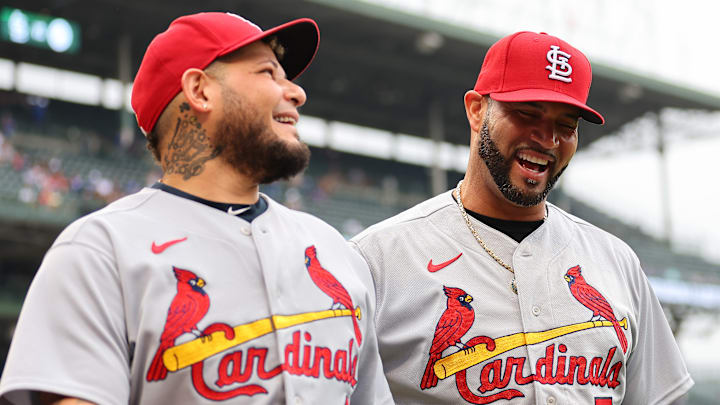2021: Tyler O’Neill (6.1)
Speaking of Tyler O’Neill, here he is. Like Jack Flaherty’s 2019, Tyler O’Neill’s 2021 was a glimpse of an otherwise disappointing Cardinal player at his full potential. After struggling through his first 3 seasons in the Majors, where he hit to a paltry .713 OPS in 450 plate appearances, O’Neill put the pieces together for a monster campaign. Combined with Gold Glove defense in left field, O’Neill smoked 34 homers and posted a 148 OPS+ to finish 8th in MVP voting. A torrid 13-homer September amidst a 17-game winning streak netted O’Neill Player of the Month honors and the Cardinals an unlikely wildcard berth.
Sadly, O’Neill’s time in St. Louis has been marred by injuries after 2021 and he has yet to find his 2021 form. He probably won’t, but hopefully, he can find this performance again instead of becoming another frustrating “what-if.”
2022: Nolan Arenado (7.9)
The 2022 season was magic. With the return and resurgence of Albert Pujols on his quest to 700 home runs, Waino and Yadi breaking the all-time record for starts as a battery, and Paul Goldschmidt en route to an NL MVP, could you believe the Cardinals’ bWAR leader was actually none of those guys?
With Paul Goldschmidt’s fantastic MVP season (7.8 bWAR), it seemed inevitable that he would lead the team in bWAR, and the streak would end in 2022. But not so fast. Finishing 3rd in MVP voting, Goldy’s teammate Nolan Arenado put up just slightly worse offensive numbers (153 OPS+ against Goldy’s 179 OPS+). However, Nolan’s platinum glove defense contributed 2.3 bWAR, Goldy was penalized for playing a less valuable position at first base, and Arenado edged his MVP teammate by just 0.1.
With Albert and Yadi now gone, Goldy and Arenado’s monster years proved that the Cardinals still had a wealth of talent for the future. Surely the Cardinals’ success will continue, right?
